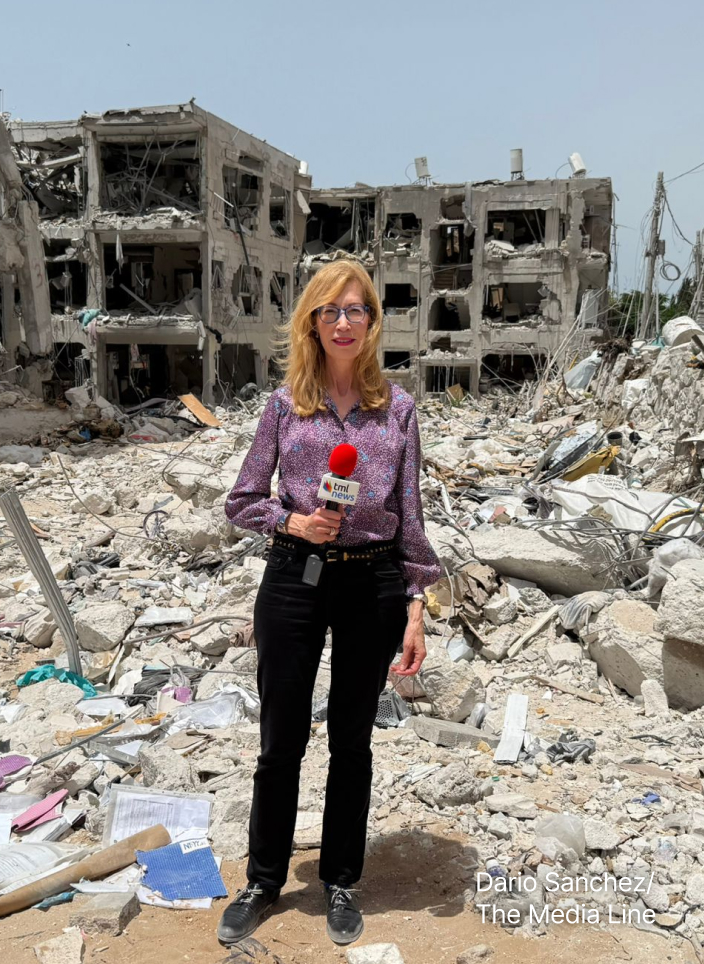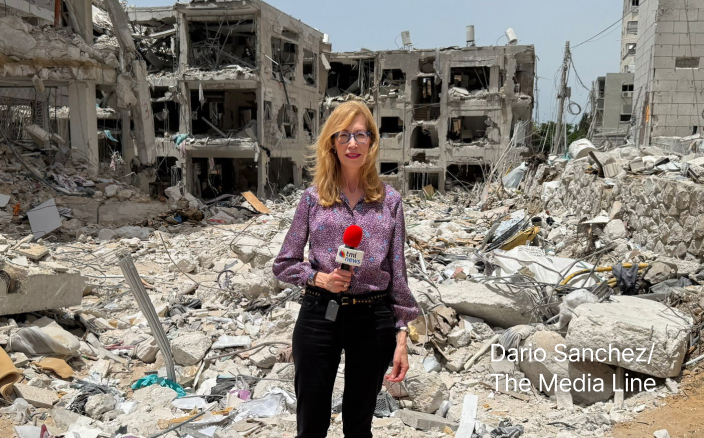[AS-SUWAYDA] The southern Syrian province of As-Suwayda has once again surged to the forefront of the national crisis, this time with reports of field massacres and tribal clashes between Druze and Bedouins. Eyewitnesses and monitoring groups accuse the Syrian Transitional Security Forces of executing Druze civilians in cold blood, while Israeli warplanes launched unexpected airstrikes targeting regime forces in the area.
On Tuesday morning, units from Syria’s Ministries of Defense and Interior stormed into the city of As-Suwayda, citing efforts to halt an outbreak of communal violence. Instead, what followed was a blood-soaked escalation. The Syrian Observatory for Human Rights (SOHR) reported that 21 Druze civilians were executed, most of them inside traditional madaa’if (gathering halls), considered sacred and social symbols in Druze culture.
One of the most harrowing video clips shared online showed ten Druze men drenched in blood inside the Al-Radwan madaafa, some lying motionless on the floor, others slumped on sofas. Torn photos of Druze clerics and smashed furniture lay scattered across the room, a chilling scene interpreted by many as a retaliatory message.
The Observatory also confirmed the execution of four more civilians, including a woman, inside the Al-Mazloum family’s madaafa in the town of Al Tha’la, accusing government forces of direct responsibility, despite official denial by the transitional authorities.
Druze communities now feel they’re being used as bargaining chips in broader regional power struggles, especially with Israel’s recent declarations of protection
“What’s happening in As-Suwayda is not a mere local skirmish,” said Dr. Nasreen Al-Ali, a Damascus-based scholar in sectarian conflict, in an interview with The Media Line. “It reflects the deep societal fragility left by 14 years of war. Druze communities now feel they’re being used as bargaining chips in broader regional power struggles, especially with Israel’s recent declarations of protection.”
Al-Ali adds, “Targeting the madaafa is highly symbolic. These halls aren’t just social venues; they are pillars of Druze identity. Destroying them in this way sends a clear message of collective subjugation. It risks fueling radicalization or communal revenge.”
We thought they came to stop the violence. But then they started shooting indiscriminately. Madaafas were burned down, people were killed for no reason.
“We thought they came to stop the violence,” said Abu Malek, a resident of the Khazanat district, speaking to The Media Line by phone. “But then they started shooting indiscriminately. Madaafas were burned down, people were killed for no reason.”
“I saw bodies lying in the streets,” he added. “One of them was my friend. He was shot in front of me.”
Rayan Maarouf, editor-in-chief of the local news platform As-Suwayda 24, told The Media Line: “What happened is beyond justification. The forces didn’t come to restore order—they came to settle old scores. The local community responded with fury.”
Give the gift of hope
We practice what we preach:
accurate, fearless journalism. But we can't do it alone.
- On the ground in Gaza, Syria, Israel, Egypt, Pakistan, and more
- Our program trained more than 100 journalists
- Calling out fake news and reporting real facts
- On the ground in Gaza, Syria, Israel, Egypt, Pakistan, and more
- Our program trained more than 100 journalists
- Calling out fake news and reporting real facts
Join us.
Support The Media Line. Save democracy.


While the Syrian government denies any extrajudicial killings, it admitted to “violations” and promised accountability for perpetrators, whether from the army or security services.
Sending government troops into As-Suwayda was a tactical blunder—even if they intended to restore order
Fadi Rahbi, a Berlin-based Syrian political analyst, told The Media Line, “Sending government troops into As-Suwayda was a tactical blunder—even if they intended to restore order. The Druze community, after years of marginalization, views any armed intrusion as an act of aggression.”
“The transitional government still lacks a clear strategy for engaging with minorities,” Rahbi added. “What we saw in Latakia in March with the Alawites, and now in As-Suwayda with the Druze, points to a governance vacuum and a dangerous reliance on violence over reconciliation.”
Just hours after Syrian troops entered the city, Israeli warplanes struck military vehicles near As-Suwayda. In a joint statement, Prime Minister Benjamin Netanyahu and Defense Minister Yisrael Katz declared:
“We will not tolerate Syrian regime forces near our borders, especially in areas home to the Druze minority, whom we have a moral obligation to protect.”
The airstrikes come at a volatile time, with Israeli officials increasingly concerned about the expanding influence of the Iran and Russia-backed transitional authorities in southern Syria, near the Golan Heights.
As-Suwayda, a Druze-majority province, has historically remained on the sidelines of Syria’s civil war, which erupted in 2011. The region largely avoided both regime oppression and Islamist control. But by mid-2023, economic despair ignited widespread protests, which quickly escalated into militarization and deepening sectarian tensions, particularly between Druze and Bedouin communities.
This past week, more than 170 people were killed over two days in some of the deadliest violence the province has seen in years. According to local sources, the clashes initially began over disputes about agricultural land, but quickly spiraled into sectarian warfare.
On Monday, the transitional government announced the deployment of forces to end the violence, but armed Druze factions, including “Forces of Dawn” and “Shield of the Mountain,” accused the security forces of covertly siding with the Bedouins.
The situation has grown more complex due to murky alliances and contradictory statements. While government forces were expected to act as peacekeepers, they ended up clashing with Druze militias, despite an official ceasefire agreement brokered with Druze religious leaders.
Syria’s Interior Ministry acknowledged ongoing clashes on Tuesday evening and vaguely noted that “some understandings were breached,” without clarifying which party was responsible. The tone of the statement appeared confused, and accountability remains elusive.
Meanwhile, Tom Barrack, the US special envoy to Syria, posted on X:
“We are actively engaged with all parties in Syria to push for de-escalation. The recent clashes in As-Suwayda are alarming to everyone involved. We’re working toward a peaceful, inclusive resolution, one that encompasses Druze, Bedouins, the Syrian government, and Israeli security concerns.”
The Druze community in Syria numbers around 700,000, concentrated primarily in As-Suwayda, with smaller populations in Damascus, its suburbs, and Idlib. Throughout the Syrian conflict, the Druze maintained a position of relative neutrality, avoiding full alignment with any faction.
But since the fall of the Assad regime in December 2024 and the rise of transitional leader Ahmed al-Sharaa, several minorities, including the Alawites and Druze, have faced escalating violations.
In March, more than 1,000 Alawites were reportedly killed in revenge attacks across the coastal region, in what was seen as retribution for decades of Assad’s rule.
Today, As-Suwayda seems to be following a similar tragic path. Despite pledges to protect minorities, the transitional government is widely blamed for the recent escalation.
The crisis in As-Suwayda reflects not just a local breakdown, but also the collapse of the national reconciliation project championed by the transitional authorities. Instead of healing the wounds of war, new fractures have emerged driven by external interventions and a faltering state apparatus.
What we’re seeing is the gradual collapse of centralized authority
Marwan Shahada, a Syrian researcher based in Beirut, told The Media Line: “What we’re seeing is the gradual collapse of centralized authority. The transitional government lacks real control mechanisms and is rapidly losing the trust of the very minorities that once saw it as a partner for a new future.”
As the fighting drags on and with no credible framework for dialogue in place, fears are mounting that As-Suwayda could become a permanent flashpoint, much like Deir Ez-Zor or Daraa in earlier years of the war.
Today, As-Suwayda stands on the brink, caught between tribal warfare, field executions, and foreign airstrikes. The city now serves as a tragic mirror reflecting the fragility of Syria’s transition and the failure of international actors to shield vulnerable communities from further bloodshed.